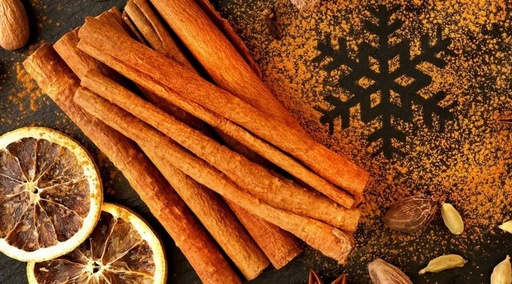
There are always some amusing ways to play with food in the world. Regardless of the various jokes during the recent Olympic events, you can also do something at home that can go viral among your friends, such as swallowing cinnamon powder(this is dangerous, please do not imitate). The particles of cinnamon powder are very fine, and once placed in the mouth, they are difficult to moisten with saliva. Thus, they can be expelled from the mouth in a smoky manner.If cinnamon powder gets into the respiratory tract, it can be very dangerous. In fact, cinnamon powder is usually found on desserts or coffee, and very few people would foolishly swallow cinnamon powder dry.
 Cinnamon powder on coffee. Image: omgwhut.com
Cinnamon powder on coffee. Image: omgwhut.com
Unlike the powdered form used by Westerners, in Chinese kitchens, cinnamon is usually found in the form of bark, and this cinnamon is often used in braised meat seasonings to enhance the flavor of large pieces of marinated meat. When I first tasted cinnamon cake, I mistakenly thought it was a cake made by a braised meat chef.
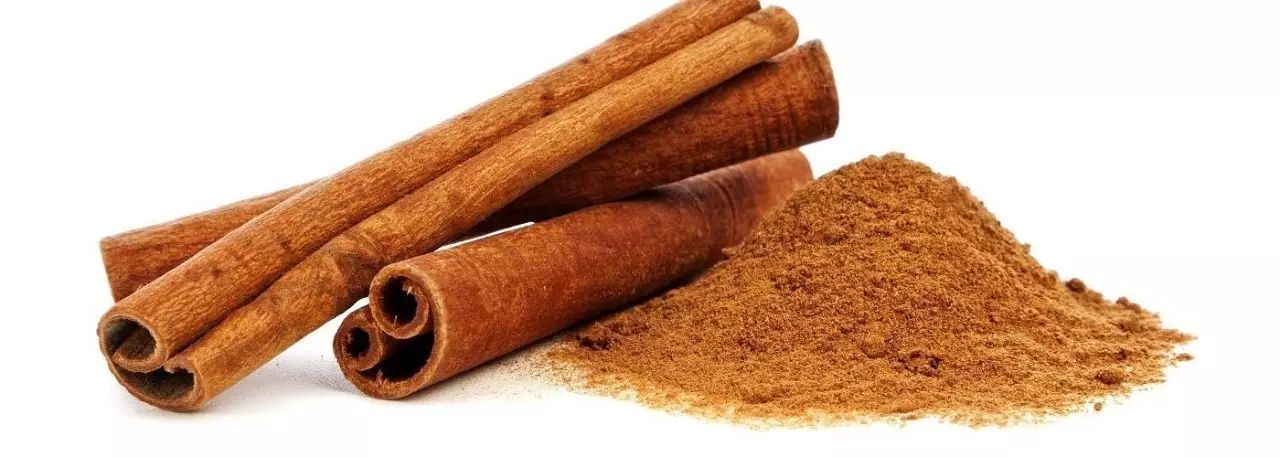 On the left is the cinnamon commonly found in Chinese kitchens, and on the right is Ceylon cinnamon powder used in Western desserts. Are they the same? Image: organiclifestylemagazine.com
On the left is the cinnamon commonly found in Chinese kitchens, and on the right is Ceylon cinnamon powder used in Western desserts. Are they the same? Image: organiclifestylemagazine.com
On the beaches of Madagascar, you can occasionally encounter vendors selling Ceylon cinnamon. The cinnamon they hold appears much finer than Chinese cinnamon and has a subtly sweet aroma, not as pungent as Chinese cinnamon. Why is there such a significant difference in cinnamon preferences between the East and the West?
How Flavorful Bark Became Popular
Cinnamon was discovered and used by the Chinese a long time ago, but it initially entered our lives as a medicinal substance. The “Shennong Bencao Jing” records the effects of cinnamon: “It is spicy and warm, treats hundreds of diseases, nourishes the spirit, harmonizes colors, benefits the joints, and supplements energy. It is the first among all medicines, and long-term use can enhance the spirit, keep one light and youthful. It brings a glow to the face and keeps the eyebrows youthful like a child.” In the later “Bencao Gangmu,” it is also highly praised. Perhaps it is because of this that this uniquely flavored bark has become prevalent on dining tables. Ultimately, cinnamon is just a spice with beautiful health wishes.
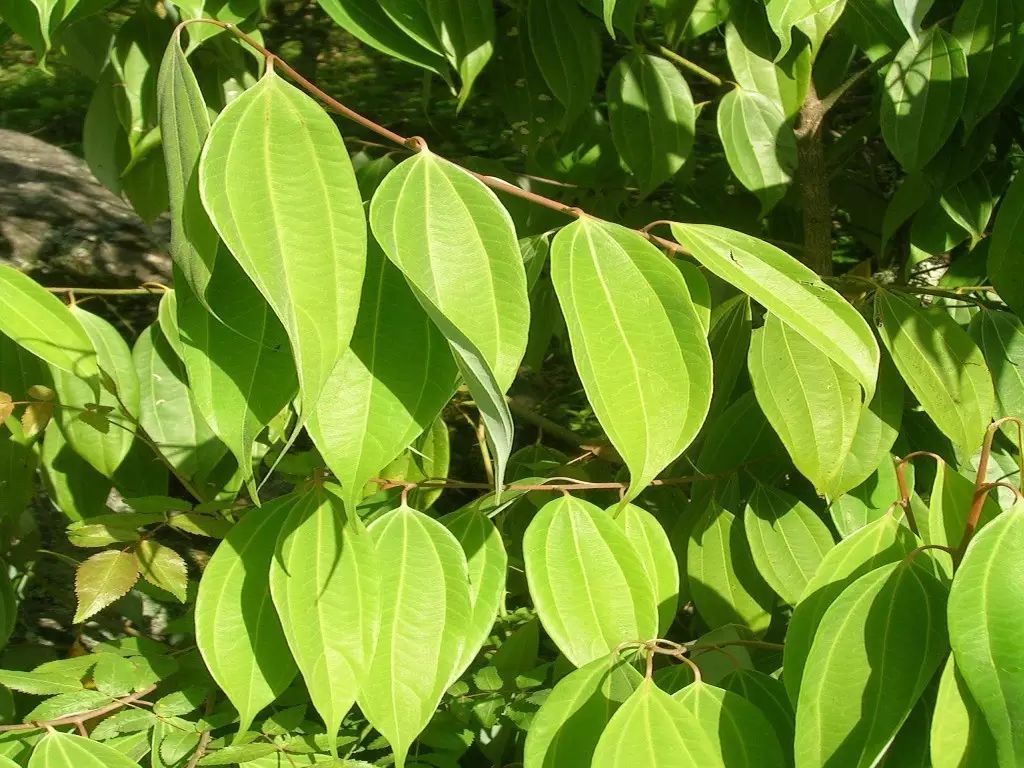 Cinnamon tree leaves. Image: wikipedia
Cinnamon tree leaves. Image: wikipedia
At the same time, the spice value of cinnamon was discovered early by Westerners, and cinnamon was one of the first spices to cross the Indian Ocean to the Western world.Cinnamon holds a very high status in the Western world. In Greek mythology, the phoenix built its nest with cinnamon branches and leaves, and cinnamon was once offered as a tribute to Apollo and other deities.Ancient Egyptians used cinnamon in their embalming oils, and it is repeatedly mentioned in the Old Testament of the Bible.
In the first century AD, the Roman scholar Pliny recorded the price of cinnamon at that time, with one Roman pound (about 327 grams) of cinnamon costing 300 denarii (a type of silver coin), which was almost equivalent to ten months’ wages for an ordinary person. In the fourth century AD, the price was still as high as 125 denarii per pound, while a farmer’s total daily income was only 25 denarii. These examples illustrate the importance of cinnamon at that time.
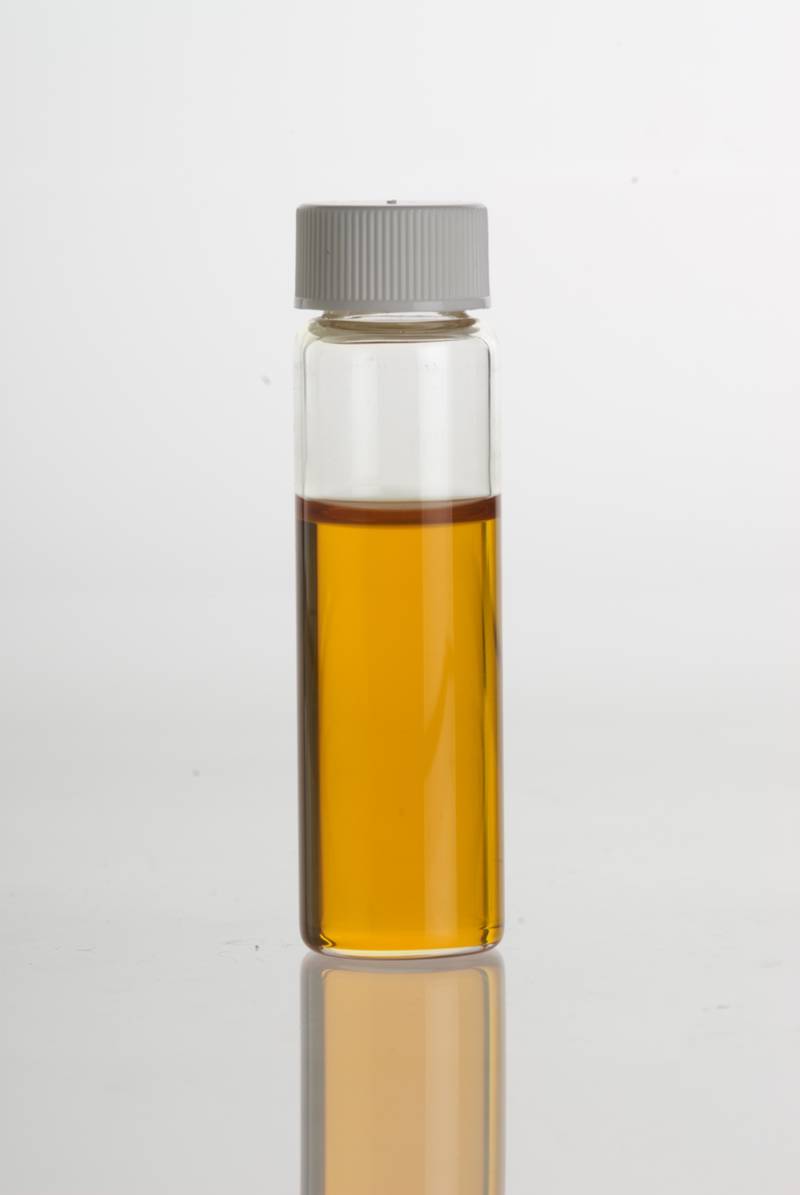 Cinnamon can also be used to extract cinnamon oil. Image: wikipedia
Cinnamon can also be used to extract cinnamon oil. Image: wikipedia
The desire for cinnamon and the high profits drove Western explorers to embark on the path of exploring the Eastern world. In 1518, the Portuguese first established a base in Ceylon (Sri Lanka), thus monopolizing the cinnamon trade between the East and West for 100 years. In 1638, the Dutch established their own base and seized control of the cinnamon trade in 1640. Later, in 1796, the British East India Company took control of all spice trade. All these struggles revolved around Eastern spices such as cinnamon, pepper, cloves, and nutmeg.
The Cinnamon Family
Broadly speaking, cinnamon refers to the bark of various plants in the Lauraceae family, which may come from Cinnamomum verum, Cinnamomum cassia, Cinnamomum burmannii, and others. Their barks can all be used as spices, but there are some differences in flavor and usage. The most important are Cinnamomum cassia and Ceylon cinnamon.
In the narrow sense, the botanical cinnamon refers to the native Chinese cinnamon (Cinnamomum cassia), which has a stronger flavor than other imitation barks and carries a unique bitterness. Additionally, the bark of Cinnamomum cassia can be as thick as 13 millimeters! All dried cinnamon is shaped like large thick rolls.
 Feel the thickness of cinnamon bark. Image source as marked
Feel the thickness of cinnamon bark. Image source as marked
Western pastry chefs typically use Ceylon cinnamon (Cinnamomum verum), and the English name “True cinnamon” indicates its status in Western cuisine. This type of cinnamon has a thinner bark than Cinnamomum cassia, presenting a bright yellow-brown color, and its aroma is milder, with almost no bitterness, but rather a slight sweetness. This makes it harmonize well with desserts.
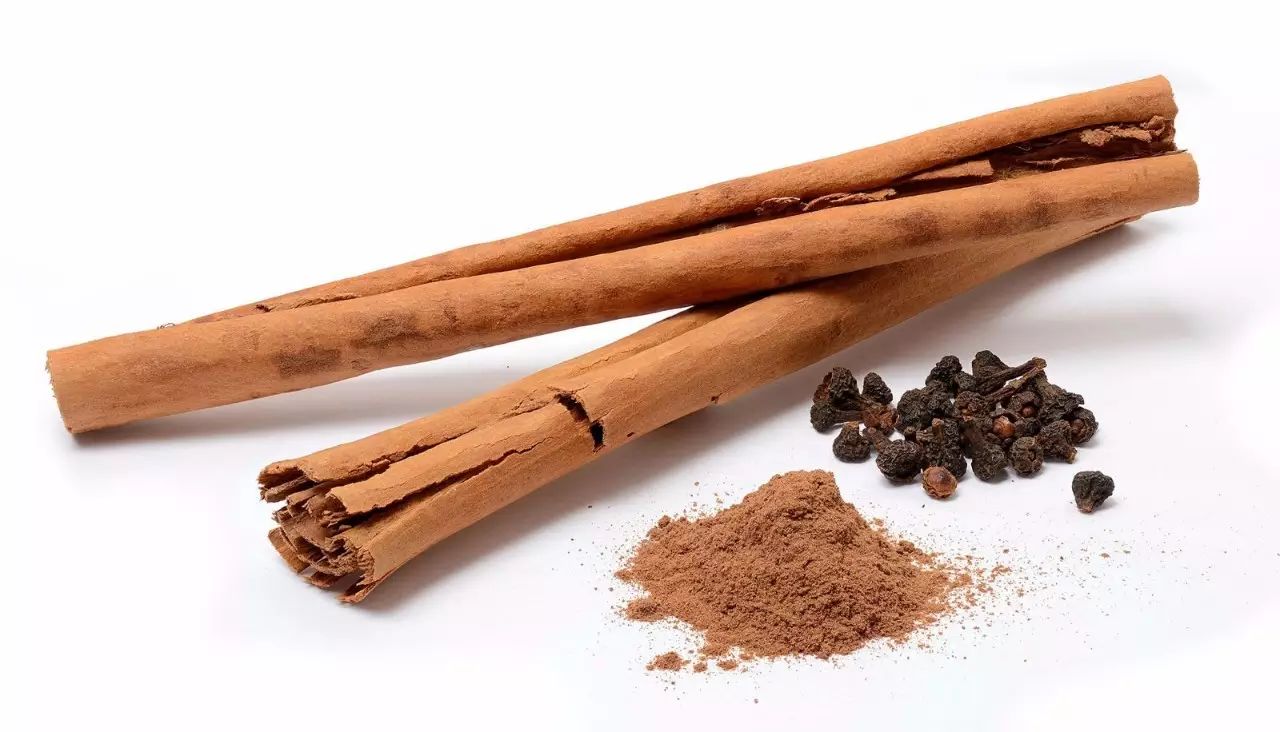 Ceylon cinnamon bark is much thinner. The black ones are dried flowers. Image: wikipedia
Ceylon cinnamon bark is much thinner. The black ones are dried flowers. Image: wikipedia
In addition to Cinnamomum cassia and Ceylon cinnamon, Cinnamomum burmannii is also an important source of cinnamon. The bark of Cinnamomum burmannii is thinner than that of Cinnamomum cassia. Its exterior is gray-brown or gray-brown, and when cut, it appears reddish-brown, with a brittle and hard texture, and a slightly sweet and spicy flavor.
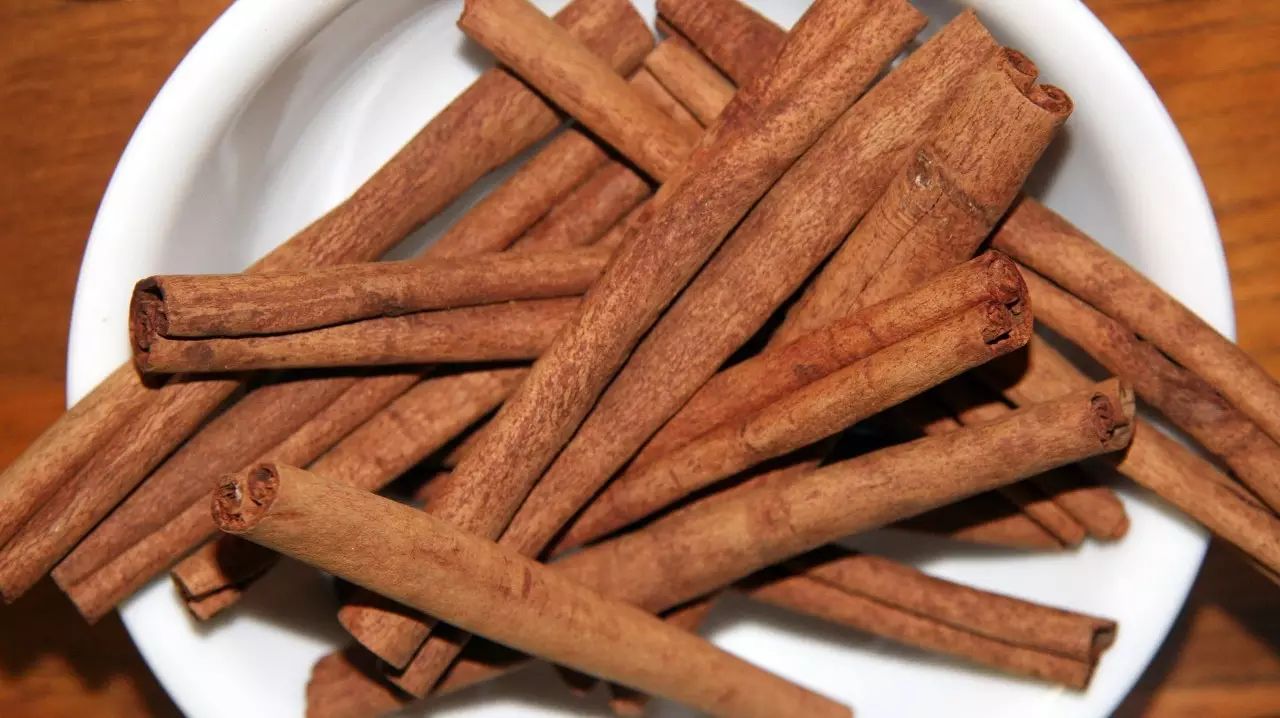 Reddish-brown bark of Cinnamomum burmannii. Image: wikipedia
Reddish-brown bark of Cinnamomum burmannii. Image: wikipedia
However, for the same branch, the bark is not renewable, so when harvesting cinnamon, the tree is cut down, and the bark is stripped off, then selected and dried to become the large pancake or roll-shaped cinnamon products. Some may say, do these stripped trees get discarded? Isn’t obtaining spices a barbaric act? Actually, there is no need to worry, as various cinnamon trees have strong sprouting abilities. As long as the root system is not damaged, along with good weeding and fertilization, new branches will soon sprout vigorously. In a few years, cinnamon can be harvested again.
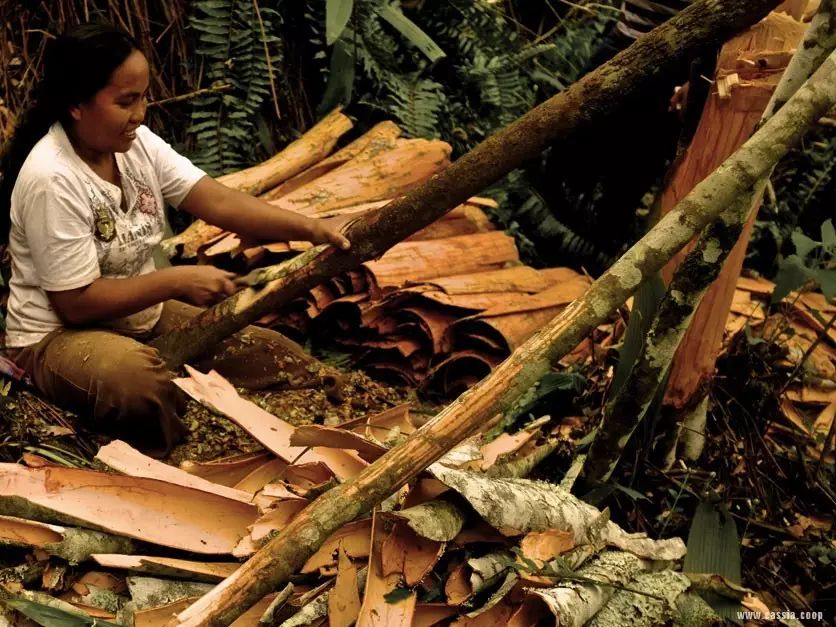 The first step to obtain cinnamon bark is to cut down the tree and strip the bark. Image: cassia.coop
The first step to obtain cinnamon bark is to cut down the tree and strip the bark. Image: cassia.coop
The shared spicy flavor of cinnamon actually comes from cinnamaldehyde, which is the compound that gives cinnamon its unique flavor. However, the cinnamaldehyde content varies among different types of cinnamon. For example, authentic cinnamon has a higher cinnamaldehyde content than Ceylon cinnamon, while the latter contains linalool and eugenol, which provide a complex floral aroma. This is the reason for the different uses of Chinese cinnamon and Western cinnamon.
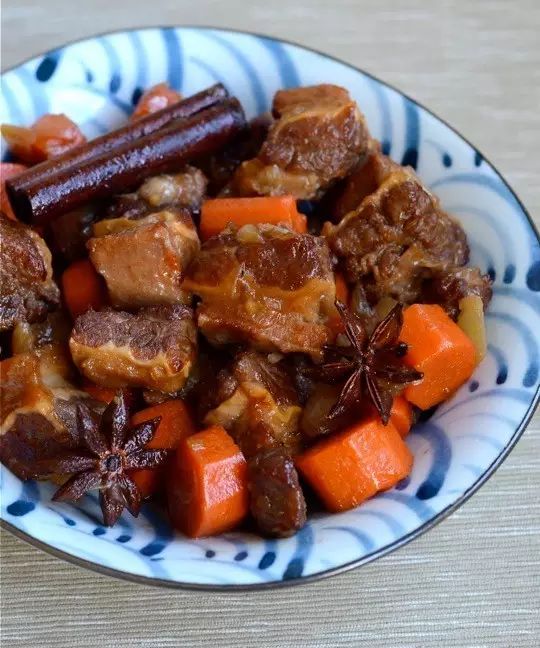 Image: appetiteforchina.com
Image: appetiteforchina.com
Today, the exchange between the East and West continues, and I have become accustomed to sprinkling some cinnamon powder on coffee and egg tarts. The pursuit of delicacies will continue to drive the progress of civilization, including the emergence of new amusing trends.
Besides cinnamon, have you often heard of bay laurel and osmanthus? They are quite different, click to see:
Bay Laurel
Osmanthus
 Species Calendar One species a day, delicious souls will eventually meet. WeChat ID: guokrpac
Species Calendar One species a day, delicious souls will eventually meet. WeChat ID: guokrpac Long press the QR code to follow us Today’s AvatarCinnamomum Family This article is from Guokr.com, reproduction is prohibited. For inquiries, please contact [email protected]
Long press the QR code to follow us Today’s AvatarCinnamomum Family This article is from Guokr.com, reproduction is prohibited. For inquiries, please contact [email protected]

